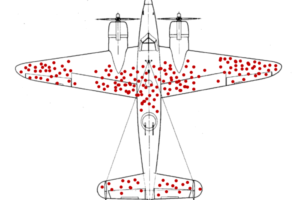Originally printed in IADLEST’s NLEARN Newsletter, January, 2023
Although many in society seem to believe that law enforcement training is ineffective, we know that there are millions of successful law enforcement contacts every year showing otherwise. This proves that activist and some political beliefs are erroneous at best and myopic at worst. However, we also recognize that the real problem is that there will never be enough training to satisfy those that complain about how policing is done. We all want more training, but budgets and time constraints make it difficult, including too many telling us what needs to be trained.
The possible key to fixing many of the problems we and society see in our training, is when we train the “what.” It is possible to fix some of the problems we see in policing by changing the order in which we train certain topics and how that training is reinforced throughout basic training.
First, ask yourself, “How was the order of training topics in your current course determined?” Think about when the last time the topic order was examined and considered. If you cannot remember or are unaware of the topic order ever being analyzed, it is time to do so.
There is a truism in training and learning:
The last thing taught is the first thing remembered.
This is called the “Recency effect”[1] in psychology and is based on Ebbinghaus’ Forgetting Curve[2] research in the 1880s. As recently as 2015[3], his experiments have been revalidated. Another aspect of his research, also validated through the decades, is called the “Primacy effect” – the first thing is also most likely to be remembered.[4]
This means that while the last thing taught will be remembered first, the next most likely thing remembered is the first thing taught. The Forgetting Curve, and subsequent research, have shown consistent ways to flatten the curve and ensure that what is taught is retained for longer periods.
Three factors can flatten the Forgetting Curve:
- Review – review the material regularly at spaced intervals.
- Retrieve – when reviewing material, make sure it is also retrieving previous knowledge to integrate into the new knowledge.
- Relate – the material should be relatable to experiences that participants will have or have been exposed to.
We can do all this using the learning theory of scaffolding. More accurately, the theory is “Zone Proximal Development and Scaffolding,” originally developed by Lev Vygotsky.[5] The theory states that participants should be given small steps that lead them to the larger goal of independent learning. This is achieved with the assistance of someone who already has had the experience and can guide them towards that goal.
You may be asking at this point, what does this mean for me? Well, for example, think about de-escalation training, when it is currently delivered in your basic academy, in relation to other topics, and you may start to see a major problem we have with law enforcement basic training. Most likely, it was squeezed in between two other blocks that seemed like the right place and training continued, or it is delivered at the end of the academy to “just get it in there.” That is the problem – we have been viewing academy training as blocks, instead of as a ladder.
Now think about when you do our high-liability training – driving, defensive tactics, and firearms. Are these three instructional blocks done at the end of your training, periodically to “break up the fun stuff,” or at the beginning? It has been my experience and observation that most basic academies schedule shooting and tactics towards the end of basic training, with defensive tactics and driving somewhere in the middle, and all of the code, legal and other content peppered throughout.
Last thing taught is the first thing remembered, right? And then we wonder why recruits come out of basic scared or pumped for fighting, and why the first tool they go to is their firearm or other weapons for every perceived threat.
What if, instead, we changed the order of when the big three are trained, then also immediately train de-escalation tactics? Train the shooting, fighting, and driving at the very beginning, and then immediately train de-escalation next – give them the high-liability training of last resort first, then train them on what to do to avoid fighting and shooting for the rest of training with the mindfulness they need to discern when and how to use all of their tools as appropriate.
Considering the Forgetting Curve theory, schedule regular practical exercise scenarios throughout the rest of the academy experience where the students apply the recently trained content in scenarios where they also have to apply de-escalation tactics for reinforcement. We may also need to change what “winning” looks like in our scenarios to be more realistic – not all calls can be de-escalated, just like not all calls require de-escalation. Start training your students to understand that “winning” is executing their training correctly, not the result of the call. We can’t control the results, only the application.
Additionally, why aren’t we training recruits to use the most common tool, which is also the most criticized skill for lacking right out of basic training – communication. The very first week of academy, issue radios and unit numbers. All communication is done by radio for the entirety of basic training. Every scenario, they use radios. Every classroom communication: use the radio. The first thing they do when they show up and the last thing they do at the end of the day is use the radio – just as the job entails.
Now when your students graduate from the academy, Primacy has given them the tools of last resort, using techniques to flatten the Forgetting Curve reinforces de-escalation and communication skills, the last thing they remember is that they can apply all of their training correctly and things can still go sideways – they didn’t fail; they are okay.
Not only will we put more well-trained and ready officers on the streets, but we may have helped them develop the confidence to do their jobs well, regardless of how the call turns out, address the calls and need for reform, all without having to add time or expense to training.
It will take a lot of analysis and planning up front, with regular review and adjustment, but we can drastically change the outcomes of training by changing when we train specific topics. Using the Forgetting Curve to inform the arrangement of our topics to develop and deliver our expected outcomes and using scaffolding to build towards the ultimate goal of guardian-servants first who can still be warriors when the situation requires.
[1] Delaney, P.F., et al. (2010). “Chapter 3 – Spacing and Testing Effects: A Deeply Critical, Lengthy, and at Times Discursive Review of the Literature.” Psychology of Learning and Motivation. V.53, pp 63 – 147 Retrieved from https://www.sciencedirect.com/science/article/abs/pii/S0079742110530032
[2] Ébbinghaus’s Forgetting Curve: Why we keep forgetting and what we can do about it.” (n.d.) MindTools. Retrieved from https://www.mindtools.com/pages/article/forgetting-curve.htm
[3] Murre JMJ, Dros J (2015) Replication and Analysis of Ebbinghaus’ Forgetting Curve. PLoS ONE 10(7): e0120644. https://doi.org/10.1371/journal.pone.0120644
[4] Cuncic, A. (Feb 2022). “What is the Primacy Effect?” Verywellmind. Retrieved from https://www.verywellmind.com/understanding-the-primacy-effect-4685243
[5] McLeod, Saul. (2019). “The Zone of Proximal Development and Scaffolding.” SimplyPsychology. Retrieved from https://www.simplypsychology.org/Zone-of-Proximal-Development.html






Leave a Reply
Your email is safe with us.
You must be logged in to post a comment.